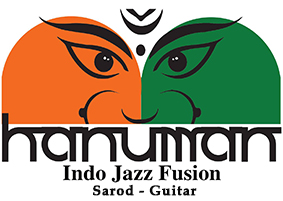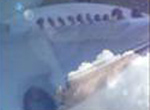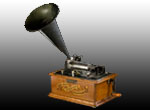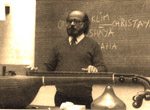![Show/hide content [x]](themes/dragonfly/images/minus.png) Menu Principale Menu Principale HOME HOME NADA YOGA NADA YOGA AMBIENTI SONORI AMBIENTI SONORI VISUAL SOUND VISUAL SOUND MUSICA LIVE MUSICA LIVE INDIAN MUSIC INDIAN MUSIC UTILITA' UTILITA' AREA RISERVATA AREA RISERVATA![Show/hide content [x]](themes/dragonfly/images/minus.png) Info Utente Info UtenteBenvenuto Anonimo
![Show/hide content [x]](themes/dragonfly/images/minus.png) Floating Sarod Floating Sarod![Show/hide content [x]](themes/dragonfly/images/minus.png) Discografia Discografia![Show/hide content [x]](themes/dragonfly/images/minus.png) ![Show/hide content [x]](themes/dragonfly/images/minus.png) Visite Visite |
 OTHERLAND - ALTRATERRA
OTHERLAND - ALTRATERRA  Music is a journey to “Otherland” moving from known to unknown, exploring new places of creativity La musica è un viaggio verso "Altraterra" passando dal noto allo sconosciuto, esplorando nuovi luoghi di creatività Riccardo Misto – Electric Guitar (Custom made Steinberger, Ibanez AH-10) In questa serie di video "Otherland" ho improvvisato con la mia chitarra elettrica su basi armoniche di altri musicisti: in "Land Zero", "Land One" e "Land Two" ho preso una traccia audio da un video interessante di Rick Beato ( basato sulla modalità Messiaen 7), interrompendo la sua progressione e aggiungendo la stessa traccia ma riprodotta all'indietro, nella seconda parte. In "New Land" ho creato una sequenza di accordi con il software di scrittura musicale Muse Score, e in "Mix Land" ho messo insieme parti delle varie basi musicali utilizzate nelle tracce precedenti. Ecco il link al video di Rick Beato In this series of videos "Otherland" I have improvised with my electric guitar on harmonic bases of other musicians: in "Land Zero", ”Land One” e “Land Two” I took an audio track from an interesting video by Rick Beato (based on Messiaen modes), breaking down his progression and adding the same track but played backwards, in the second part. In “New Land” I’ve created by my own a chord sequence with Muse Score music writing software, and in “Mix Land” I put together parts of the various backing tracks used in the previous tracks. Here the link to Rick Beato's video: https://www.youtube.com/watch?v=nCXxV7eDEPc Land Zero- Harmony based on Messiaen mode n.7 (Keyboards track by Rick Beato) modo 7 - do - re♭ - re - mi♭ - fa - fa♯ - sol - la♭ - la - si - do Land One Harmony based on Messiaen mode n.4 (Keyboards track by Rick Beato) modo 4 - do - re♭ - re - fa - fa♯ - sol - la♭ - si - do Land Two Harmony based on Messiaen mode n.3 (Keyboards track by Rick Beato) Newland Harmony based on Messiaen mode n.3 (Keyboards track by R. Misto) modo 3 - do - re - mi♭ - mi - fa♯ - sol - la♭ - si♭ - si - do  Pansodia International Jazz Day 2020
Pansodia International Jazz Day 2020  PANSODIA è il nome “nuovo” dato all’opera collettiva originale che quest’anno verrà presentata in streaming sul canale YouTube dell’Università degli Studi di Padova il 30 Aprile, per celebrare l’International Jazz Day 2020. Riccardo Misto partecipa con due video musicali. Il primo è un'opera collettiva con altri musicisti nazionali e internazionali. PANSODIA 2020 VIDEO 1 Titolo: YAMAN SONG Composizione sulla base del Raga Yaman della cultura Hindostana che dà spazio all’improvvisazione e alla contaminazione world music. Collaborazione fra musicisti nazionali e internazionali. Ogni musicista ha effettuato registrazioni e video separati che sono stati successivamente singolarmente assemblati con tecnica split screen. Riccardo Misto: Padova ITALIA- Chitarre Double Neck, Sarod - tema e arrangiamenti, mix video Max Castlunger Terlano, Bolzano ITALIA Tabla - Gatham, mix audio Arnab Bishnu Chowdhury Pondicherry, Auroville - INDIA Voce Angelo Sorato Oriago, Venezia ITALIA Bansuri Fabio Lazzarin Venezia ITALIA Tabla Lucjan Wesolowski Retkinia - Lodz - POLONIA Sitar Silvia Refatto Padova ITALIA Tanpura e coordinamento progetto PANSODIA 2020 Video 2 Titolo: OTHERLAND – ALTRATERRA Composizione originale: Riccardo Misto (Electric guitar, keyboards, video collage)  link pagina Facebook PROGETTO COMPLETO  STHIRATA - Musica spirituale indiana terapeutica
STHIRATA - Musica spirituale indiana terapeutica Sthirata - Musica spirituale indiana terapeutica con 2 Mudra Riccardo Misto & Arnab B. Chowdhury “Sthirata” significa stabilità in Sanscrito. In questi tempi turbolenti con il Corona virus , dobbiamo stabilizzare e guarire noi stessi e crescere in solidarietà con la nostra famiglia, la nostra comunità, la nostra nazione, la nostra Madre Terra. Dato che dobbiamo isolare il virus, dobbiamo isolarci e rimanere calmi, combattendo lo stress, l'ansia e soprattutto la paura. I seguenti 2 esercizi immersivi possono essere eseguiti a casa a stomaco vuoto. Innanzitutto, scarica gratuitamente la nostra musica terapeutica chiamata "Sthirata" da questo link: SCARICA QUI Questa musica speciale sarà la nostra guida e mezzo per invocare la stabilità interiore. Sei libero di riprodurre la musica dallo smartphone o dagli altoparlanti. "Sthirata" è stato creato congiuntamente da me e dal mio collaboratore italiano Dr. Riccardo Misto, musicista e docente di Nada Yoga Musictherapy, Padova, Italia. Quindi qui iniziamo, accendiamo la musica in modalità loop. 1. Esercizio 1: guarisci te stesso Siediti nel Sukhasana, rilassati e rallenta i tuoi respiri preferibilmente con gli occhi chiusi per concentrarti meglio. Mantieni l'attenzione della mente sul movimento del ritmo della musica. Se puoi, respira con il ritmo della musica. Siamo un conglomerato di tre umori o Dosha (Vata, Pitta e Kapha). Dobbiamo lavorare per l'equilibrio dei nostri Dosha. Quando lavoriamo per raggiungere questo equilibrio, ci guariamo. Ora formiamo il Mukul Mudra con entrambe le mani. Metti le 4 dita sul pollice. Mukul indica un bocciolo in sanscrito. Quindi immagina di creare due boccioli di fiori con le tue mani. Mukul Mudra Il bello di questo Mudra è che può essere applicato anche in modo specifico all'organo che necessita di guarigione. Quindi, per cominciare, in questo articolo, affrontiamo i nostri polmoni, che sono a rischio massimo con il Corona virus. Si prega di posizionare le mani sul lato destro e sinistro, un paio di pollici sotto la clavicola dove si trovano i polmoni. Tieni questo Mudra con brevi sessioni di 5 minuti e poi rilascia le dita. Visualizza che stai guarendo i tuoi polmoni con la luce bianca. Se hai persistenza, potresti fare 5 brevi sessioni durante il giorno. 2. Esercizio 2: aumenta la tua vitalità Siediti nel Sukhasana con gli occhi vicini e mantieni l'attenzione sul ritmo della musica di Sthirata. Ora formiamo Pran Mudra (Life Mudra) con entrambe le mani. Pran Mudra Metti insieme le punte del pollice, dell'anulare e del mignolo. Le altre dita rimangono allungate senza sforzarsi. Il Pran Mudra attiva il Muladhara o Chakra della radice, dove si trova la nostra forza elementale. L'ansia porta al nervosismo che è percepito come un segno di debolezza, distrazione e mancanza di stabilità interiore. Questo porta a un drenaggio della nostra energia vitale che necessita di rifornimento. Pran Mudra ti aiuterà a ridurre l'affaticamento e ad aumentare la fiducia in se stessi e il coraggio per affrontare le sfide e iniziare qualcosa di nuovo, forse una nuova prospettiva. Complessivamente, contribuirà ad aumentare la tua energia vitale e migliorare la qualità del sonno. Tieni Pran Mudra per 5-30 minuti secondo la tua capacità di attirare la tua attenzione su corpo, mente e spirito. Alla fine di una sessione, puoi sdraiarti a Shavasana in riposo attivo. Tuttavia, se il tuo corpo vuole dormire, ascoltalo e scivola nel sonno con la musica spirituale terapeutica indiana. La vita è bella e anche tu lo sei. Namaste. Arnab Bishnu Chowdhury & Riccardo Misto Arnab Bishnu Chowdhury è un insegnante indiano di coscienza che usa lo Yoga della musica, del movimento, della mente, del corpo, del respiro e del sonno. È fondatore del programma di formazione Know Your Rhythm e terza generazione di una famiglia di musicisti classici indiani. Ha sede presso Sri Aurobindo Ashram, Pondicherry. www.ninad.in  HANUMAN
HANUMAN Hanuman è una delle figure determinanti del Ramayana, poema epico indiano. Questa affascinante divinità dall'aspetto di scimmia è figlio spirituale del vento e allievo del sole e personifica la saggezza, la devozione e l'impegno, caratteristiche fondamentali per far nascere una Scuola d'arte dove studiare la Musica e la Danza. Hanuman. La Scuola di Musica e Danza Indiana ha il ruolo di unire la cultura musicale occidentale europea a quella indiana per offrire agli allievi una nuova prospettiva estetica dove lo studio porterà ad una nuova forma di pensiero, una nuova dimensione percettiva ed emozionale. Hanuman APS con il coordinamento di Alan Bedin vuole aprire un nuovo orizzonte musicale dove poter sviluppare attraverso l'arte antica una nuova conoscenza. Questa esperienza artistica è rivolta a tutti coloro che vogliono conoscere la danza e la musica in modo nuovo, con o senza una preparazione precedente. Un percorso interiore da affiancare alla propria vita per: - il musicista accademico occidentale che vuole studiare uno strumento o conoscere la tradizione e la teoria della musica indiana (ritmo, intonazione, forma). - i musicisti che suonano già strumenti tradizionali, cantanti o danzatori che vogliono perfezionarsi. - persone curiose che per contingenze di vita o questioni di lavoro non hanno ancora potuto dedicare un po di tempo a se stessi e allo studio di una disciplina. Hanuman. La Scuola di Musica e Danza Indiana da quest’anno accademico, 2019-2020, avrà la possibilità di rilasciare il diploma per canto e strumenti tradizionali. Il coordinamento e lo staff degli insegnanti è orgoglioso di presentarvi il primo centro d'esame italiano di P. V. Mano Manjarie: Mano Manjari Sangeet Nikethan affiliato al Bhathkande Sangeet Vidyapit di Lucknow, India (http://www.bsvidyapith.org/). Sarà possibile, per chi interessato, sostenere gli esami ottenendo il diploma dal Bhathkande Sangeet Vidyapit. In questo caso si verrà preparati dai docenti secondo il programma richiesto per poi sostenere l'esame con la Maestra Mano Manjarie e una commissione indiana. Hanuman. La Scuola di Musica e Danza Indiana, grazie agli spazi e alle caratteristiche di Qui e Ora, può offrire location ideali per lezioni individuali e collettive insieme a maestri preparati dove poter iniziare o affinare la propria conoscenza e preparazione nelle seguenti discipline: CANTO INDIANO (Mano Manjarie) BANSURI (Angelo Sorato) SITAR (Andrea Ferìgo) SAROD (Riccardo Misto) TABLA (Maurizio Murdocca) TEATRO DANZA BHARATANATYAM (Nuria Sala Grau) DANZA CLASSICA INDIANA ODISSI (Stella Penzo) AYURVEDA (Cinzia Conte) TEORIA E PRATICA DELLA MUSICA INDIANA (Patrizia Saterini) INDOLOGIA (Roberto Perinu) Inoltre nel nuovo programma Experiences sono stati pianificati due nuovi corsi che orienteranno la scuola alle nuove tendenze: INDO JAZZ FUSION (Riccardo Misto) SITARVALA © (Andrea Ferìgo) 20 Ore di lezioni individuali: Ogni corso sarà seguito individualmente da un maestro con appuntamenti settimanali. 10 Ore di collettive: Momenti d'incontro tra insegnanti ed allievi per condividere musica d'insieme e lezioni interdisciplinari, oltre laboratori condotti insieme a professionisti esterni. Programmi funzionali: Una soluzione di studio che garantisce molta pratica ed un rapporto continuo con il proprio insegnante. Durante il corso annuale, inclusi nel programma, ci saranno incontri con specialisti e senior per garantire un'adeguata preparazione e il giusto punto di vista sulla dimensione del pensare musicale indiano: tecnica e teoria, guida all'ascolto, concetto estetico. Hanuman. La Scuola di Musica e Danza Indiana si trova al QUI e ORA Via Monte Novegno, 4 Vicenza Non esitate a contattarci in caso di ulteriori informazioni o richieste relative alla scuola e all'iscrizione. Coordinamento: Alan Bedin 338 9167948 info@hanumanschool.com - www.hanumanschool.com http://www.bsvidyapith.org/  SHABDA Indo Jazz
SHABDA Indo Jazz “Shabda”, termine sanscrito per indicare il Suono Trascendentale, è il nuovo progetto musicale di Riccardo Misto, centrato su un repertorio che fonde il Raga indiano, hindustano e carnatico, con le caratteristiche della musica occidentale (Jazz fusion). Il gruppo è composto da Riccardo Misto al Sarod e Rebab, Angelo Sorato, uno dei flautisti più interessanti e versatili del panorama italiano, al Bansuri, e Fabio Lazzarin, esponente di spicco per quel che riguarda le percussioni indiane, alle Tabla. Il programma comprende composizioni originali e brani del repertorio Shakti di John McLaughlin, il pioniere della corrente Indo Jazz. Nasce una musica che si muove tra atmosfere meditative e momenti di grande dinamicità, vigore e interplay, dove l’improvvisazione gioca un ruolo fondamentale.
 |
Cerca
![Show/hide content [x]](themes/dragonfly/images/minus.png) A Scuola da Mukunda
![Show/hide content [x]](themes/dragonfly/images/minus.png) |
© 2016 Riccardo Misto - Nada Yoga Musictherapy - P.I.04622290288
Interactive software released under GNU GPL, Code Credits, Privacy Policy
Interactive software released under GNU GPL, Code Credits, Privacy Policy
includes/cmsinit.inc
- CMS Notice line 145: sendmail_from: info@nadayoga.it
- Notice line 232: Undefined offset: 0





